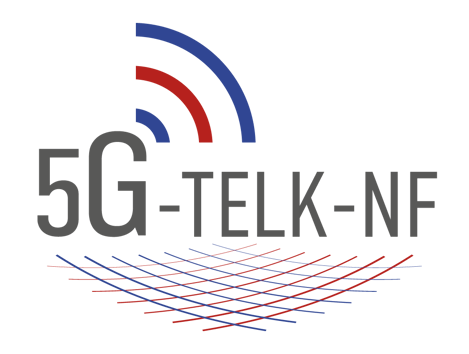- Olga Schmidt
- 12.12.25
- 2 min
- Success factor sustainability
Your contact person
Christian Hammerich
Today's data connections in mobile communications (3G and 4G (LTE)) are increasingly reaching their limits and can no longer meet the demands placed on them by new applications. It is therefore essential to implement new technologies, such as those of 5G communication, as quickly as possible, for example in applications of future mobility, and to develop them specifically for rural areas as well.
|
Info-Box: What is 5G? 5G stands for the fifth generation of mobile communications. The 5G network has been designed to support and flexibly evolve the services and applications of the future. 5G will offer a faster data rate with reduced loading times or delays in the transmission of data, as well as more capacity for a more efficient network. |
||
5G technology offers faster data speeds with less delay than 4G (LTE). Some 5G services will provide coverage areas with up to 100 times faster data speeds and near-instantaneous response time. Technically, current 4G speeds are around 12-36 megabytes per second (Mbps), while 5G services are expected to support speeds of up to 300 Mbps or more.
The 5G network is driving global growth. Through a groundbreaking 5G economic study, it was found that the full economic impact of 5G is likely to be realised around the world by the year 2035 - supporting a wide range of industries. With 5G, data transmission is much faster and more extensive. Therefore, real-time analytics and real-time data transmission will become feasible. Likewise, in health and safety, 5G access is expected to improve business-critical services. Opportunities include the potential for remote operations, better traffic management and many other applications that depend on near-instant response time.

The aim is to research the added value of a 5G campus network for applications of Automated and Connected Driving (AVF) and Unmanned Aircraft Vehicles (UAV), if possible in real conditions, by the end of 2023. At the former airfield in Leck, applications of AVF are being tested by the Kraftfahrt Bundesamt (KBA), and of UAV (including live accident support). In addition, further applications of the AVF as well as wind turbine and high-voltage mast inspections with drones are to be tested at the test site of the GreenTEC Campus (GTC) in Enge-Sande.
One of the main goals will be to set up a combined control centre for UAV flying and the AVF, from which the planned tests will be managed and carried out.
The four municipalities of Tinningstedt, Enge-Sande, Leck and Klixbüll from the district of Nordfriesland, the Federal Motor Transport Authority and 13 other partners are involved in this project. So is EurA AG, which is managing and coordinating the project.
The project area of the 5G-TELK-NF project comprises the contiguous municipal areas of the four applicant municipalities in the district of NF. In the municipal areas of Tinningstedt, Leck and Klixbüll there is a conversion area with the former military airfield of Leck. In the south, in the Enge-Sande area, there is a former larger logistics military site which, as a conversion area, is now used entirely for civilian purposes as a green technology and innovation park.
For this reason, the four municipalities of Tinningstedt, Leck, Enge-Sande and Klixbüll in the northern part of the district of Nordfriesland in Schleswig-Holstein have decided to establish a 5G campus network that will offer various players (public authorities, companies as well as research institutions) the opportunity to take the next steps in mobility applications (Automated and Connected Driving and Unmanned Autonomous Flying) in the future, in the development of new products as well as services based on a fast and broad 5G mobile infrastructure.
The development of the 5G campus network will provide assured on-site mobile coverage for future innovative applications, which will help to attract more companies from the aforementioned sectors to the area, helping to strengthen the business location. The possibility of testing real-time applications in the Internet of Things (IoT), such as automated and connected vehicles, in this project is already seen as a central component of the future mobility offer. But UAV applications will also benefit from the 5G campus network. Both topics will receive a further, significant boost in development through the use cases described in this project description in conjunction with 5G.
If you have any questions or are interested in the 5G-TELK-NF project, please contact us at any time. You can also find a lot of information on the homepage: www.5g-telk-nf.sh
Author: Joke Brodersen

Your contact person
Christian Hammerich
EurA AG
T- 079619256-0Max-Eyth-Straße 2
73479 Ellwangen
info@eura-ag.com